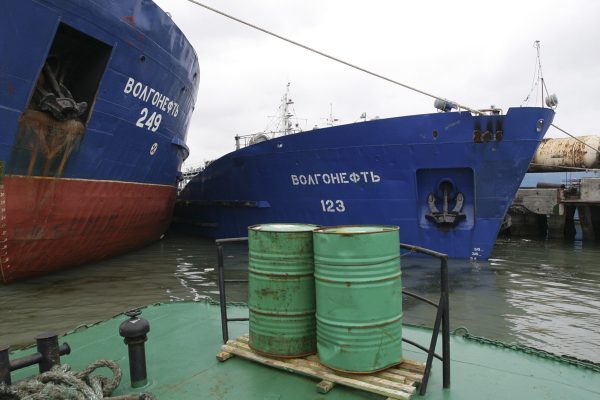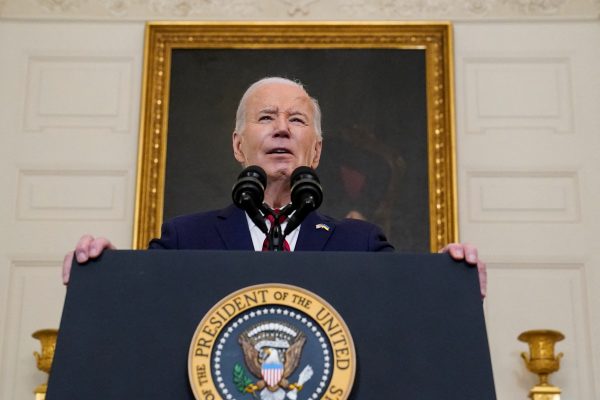The bleakness of the Western commentariat’s recent output is striking — Ukraine’s counteroffensive has made little progress, they say. Major US news outlets cite intelligence agencies opining that things are “grim” and that hopes are fading that Ukraine can reach its (supposed) objective of Melitopol, more than 50 miles away.
This is simply wrong. Intelligence analysts may look at the map of Southern Ukraine and see distances; military planners will apply the military math and see something very different. They know that to crush the Russian army and strangle the troops in frontline fortifications, they don’t need to advance 50 miles. 10 miles will do it.
Why? Because although it would be great if Ukrainian troops broke through to the shores of the Sea of Azov, they do not have to. Instead, they can achieve a significant operational outcome by bringing Russia’s ground line of communication (GLOC) under their guns.
On or around August 22, Ukraine’s troops liberated the village of Robotyne, some 90km (around 55 miles) from the Sea of Azov, a major accomplishment given the enormous efforts of the Russian invaders to fortify and hold it.
From here, the Ukrainians need to advance by a further 10–15 km (7–10 miles), in order to range their guns on Russia’s east-west transport routes that are critical to the ability of its army and armed forces to fight. If Ukraine can interdict these road and rail links, it’s very hard to see how the Russian army can continue to fight.
This will not be easy, but it’s reasonable to think it will happen. This will be achieved using its indirect capability — first the M142 High Mobility Artillery Rocket System (HIMARS) and the M270 Multiple Launch Rocket Systems (MLRS), whose reach is about 80km-90km, and later its 155 mm artillery with a range of over 40km. These are hugely more capable than Ukraine’s pre-war 152mm Soviet-style artillery that have a range of only 17–20 km.
Russia’s GLOC does not run along the sands of the Azov Sea’s shores but rather inland and, therefore, closer to Ukraine’s advances. The M14 highway running east-west, and largely parallel to the coastline, is about 7km–10km from the shore. Nearby is the broader logistics corridor where the Russians place supply and ammunition dumps, fuel storage, higher-echelon command posts, reserve units, and logistic railheads.
This logistics corridor becomes increasingly narrow for every inch the Ukrainians liberate. Once the Russian assets mentioned above are within Ukrainian MLRS reach, the Russian senior leadership will have an almost impossible choice to make — will they be able to sustain operations west of Melitopol when every aspect of their fighting effort is under fire?
As winter approaches, the logistic situation west of Melitopol is likely to get worse and worse. As occurred on the western bank of the River Dnieper last fall, even Vladimir Putin will be forced to acknowledge reality – he can fight on and risk mass troop surrenders, or pull back. Either way, the so-called land bridge from Russia to Crimea will be snapped.
So Russian commanders will not think they have 90km of space to play with behind their backs. Their only consolation is that the Ukrainians can’t place MLRS artillery at the forward edge of the battle area; these units are extremely valuable and must be used from safer positions 10km–15km behind the frontline.
Operational commanders on both sides will know the math: if the Ukrainian army is 90km from the Sea of Azov, and MLRS has a maximum range of 90km but needs to be placed 10km behind the frontline, then the Ukrainians must advance another 10km southward to cover all the terrain between them and the Sea of Azov.
Ukraine is now closing in on this goal at several spots along the frontline, offering the possibility that its rocket artillery will be able to strike the Russian land bridge from different angles.
Once this happens, there is (forgive the use of this old term) a domino effect. All east-west roads and railroads will be in range, and at this point, Russian private companies will no longer be interested in risking their drivers and $150,000 trucks for a $700 cargo payment from Mariupol to Kherson oblast.
Russia has used civilian haulage contractors for many months now and offers good rates. But the chance of an artillery strike changes the calculation, creating the risk of driver deaths and financial disaster.
A modern private 18-meter truck can carry 15–30 tons of supplies, compared to a Russian Army Kamaz truck, which can carry only a few tons in an unstructured pile on the truck bed. Private companies can, of course, be ordered, nationalized, or otherwise coerced to supply the army, but that carries its own risk of disenchantment or outright anger aimed at the Kremlin.
There are other problems. While Russia’s occupation authorities claim a Crimean population of 2.5 million, the true number on the peninsula is likely closer to 1.5 million.
With Russia’s land bridge disrupted or closed by Ukrainian indirect fire or even its threat, Crimea would be solely supplied by the Kerch Bridge or by sea. At that point, the Kremlin would have to make ugly choices — either the Crimean population will suffer significant shortages during the upcoming winter, or the army will go short. The Kerch Bridge’s capacity, will likely not be enough to supply both the western part of the front and the civilian population.
So, how will Russians in Crimea react? We don’t know, but past Ukrainian attacks have led to an exodus of civilians. That’s hardly a message the Kremlin would welcome.
All of which is ahead of us. In the meantime, everything focuses on those 7-10km advances from Robotyne and other frontline areas. As always, the fighting and the dying will be done by Ukrainians, but the West absolutely must ensure that there are sufficient rocket artillery systems, ammunition, and support to do the job.
Jan Kallberg, Ph.D., LL.M., is an Assistant Professor in the Department of Mathematical Sciences at the United States Military Academy. He is a non-resident Senior Fellow with the Transatlantic Defense and Security program at the Center for European Policy Analysis (CEPA). Follow him at cyberdefense.com and @Cyberdefensecom.
The views expressed are those of the author and do not reflect the official policy or position of the United States Military Academy or the Department of Defense.
Europe’s Edge is CEPA’s online journal covering critical topics on the foreign policy docket across Europe and North America. All opinions are those of the author and do not necessarily represent the position or views of the institutions they represent or the Center for European Policy Analysis.





